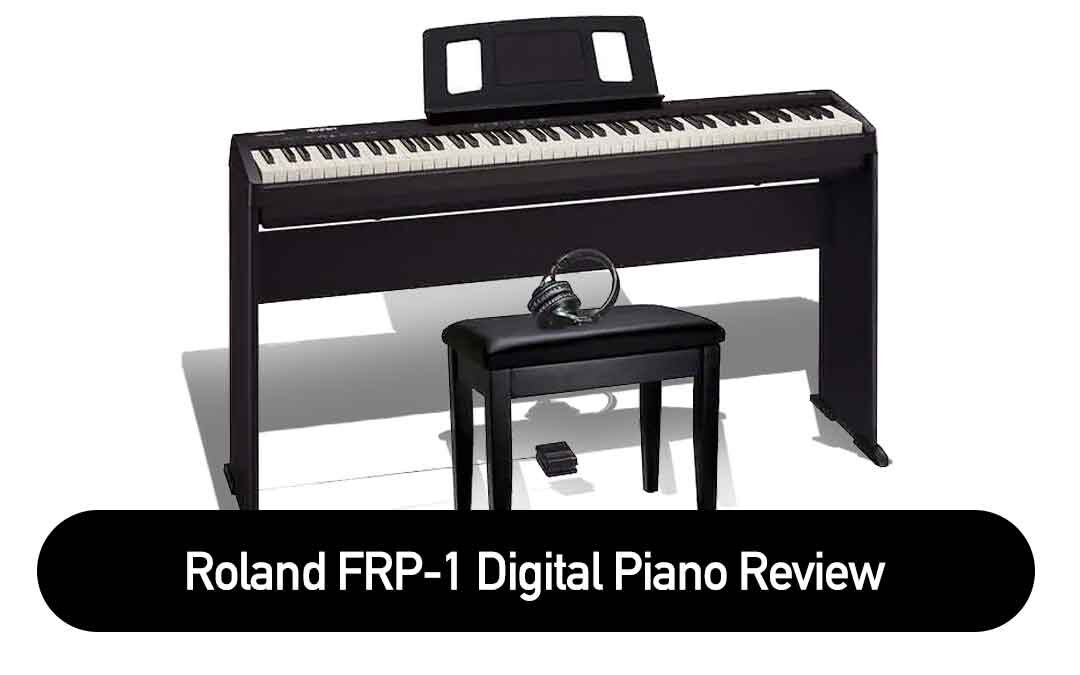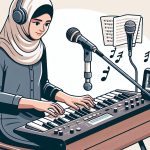The Great Debate: Is Piano or Guitar Easier to Learn?
Social Impact
Widespread Popularity of Music Lessons
Learning an instrument like piano or guitar is an extremely popular extracurricular activity for both children and adults alike. Millions of people across the world sign up for formal music lessons on these instruments each and every year. The choice between opting to study piano versus guitar has rather broad social implications that extend far beyond just deciding how to fill one's free time. When looking at the bigger picture, the selection influences everything from family dynamics to education systems to community organizations.
Music is simply an integral part of human life and culture. Playing an instrument provides a creative outlet, a process of self-expression, and a way to connect more deeply with others. The arts, including music, are essential to quality of life and have the power to transcend boundaries between people. All communities everywhere incorporate music into social practices, traditions, and values. Whether piano or guitar, the opportunity to participate more fully in these musical spaces is open to everyone.
Building Confidence and Creativity
Learning to play either piano or guitar can be tremendously beneficial for building up confidence as well as enhancing creativity. As people steadily develop their musical skills on the instrument they have chosen, even starting from just a beginner level, they will likely feel a far greater sense of personal achievement, competence, productivity, and expressiveness. Their aptitude translates into real life with positive impacts on social circles, professional aspirations, educational performance, and overall wellbeing.
Playing an instrument provides an outlet for creativity and artistry. With piano or guitar, students can explore musical composition, write their own songs and instrumental pieces, and ultimately learn to translate their inner world into external expression through sound. Achieving small goals like learning a favorite tune or nailing a challenging chord progression fuels creative passion. As musical abilities advance, what once seemed impossible becomes second nature. That creative energy spills over into other areas of life as well.
Strengthening Bonds and Communities
Playing music powerfully connects people across all walks of life. Simply joining a band or ensemble introduces teamwork, camaraderie, and friendship. Giving a performance fills both player and audience with joy. Music has a profound capacity to unite communities and bridge divides between cultures. Shared musical experiences build understanding. Whether someone opts for piano or guitar, actively participating in music strengthens social bonds and brings people together.
Music has been a vital community institution throughout all of human history. Every culture worldwide incorporates music heavily into social functions and local traditions. Across all nations, music facilitates storytelling, expression, ceremonies, dance, worship, celebrations, and more. Playing an instrument allows individuals to engage with their regional musical heritage on a deeper level. Ensembles like orchestras, choirs, marching bands, and guitar groups provide connection through regular practices and shows. Music is a universal language that transcends scores of potential differences.
Historical Origins
Centuries of Piano Tradition
The piano as we know it today has existed in one form or another since the very early 1700s, giving it centuries of history and development behind it. The instrument has evolved gradually over time, with technological improvements that helped create the modern piano most commonly used around the late 1800s. This exceptionally long tradition and evolution has produced widely established teaching methods, technique guides, musical theory education, and a massive repertoire of canonic compositions.
Agents like piano manufacturers, composers, and music schools have helped formalize and standardize piano instruction over the decades. Pieces by famous composers like Mozart, Beethoven, Chopin, and Debussy pose technical challenges for students while exposing them to varied styles from Baroque to Impression. Within classical genres, piano enjoys an esteemed stature and studying it provides access to that rich heritage. The lengthy, continuous piano tradition influences its ongoing popularity as a foundational instrument.
Ancient Roots of Guitar
Early guitar-like instruments originated over 4,000 years ago and have taken diverse forms across different world cultures since then. Precursors to the modern guitar first emerged in ancient Persia, Greece, and Moorish Spain. These early instruments were later brought to Europe from the Middle East and North Africa during the Middle Ages, roughly 500 or more years ago. From there, guitar design evolved and branched out regionally, leading to instruments like the vihuela in Renaissance Spain.
Of course, the guitar as we currently conceptualize it took shape more recently, during the mid to late 1800s. Like the piano, the guitar has undergone tremendous changes in structure, materials, and technical capabilities over the centuries. It has a long, rich past and has captivated musicians for millennia. The instrument’s ancient origins anchor it firmly as a globally beloved musical tradition. Myriad cultures have incorporated their own guitar variations into local musical heritage.
Recent Guitar Popularity Surge
Although guitar instruments have existed for thousands of years across many civilizations, the modern six-string guitar saw an utterly meteoric rise to mass popularity during just the 20th century. The growing prevalence of recorded music and radio exposed audiences to guitar sounds more regularly. As musical tastes shifted to favor new contemporary genres like folk, country, blues, and especially rock ‘n’ roll, the guitar assumed center stage.
Key figures like Andrés Segovia and Robert Johnson paved the way for guitar visionaries of the 50s and 60s who ultimately transformed the instrument into an icon of popular culture, especially once amplification took hold. Wildly influential musicians like Chuck Berry, Dick Dale, Keith Richards, Eric Clapton, Jimi Hendrix, Carlos Santana, and Eddie Van Halen cemented the guitar’s status. Today it remains intensely intertwined with pop music and culture. In contrast, piano studies retain a more traditional, classical reputation.
Economic Factors
Piano's Higher Costs
Acoustic pianos certainly represent a major investment in terms of raw financials. Decent quality upright pianos often cost between $3,000 to $7,000 at minimum, while grand pianos easily start around $10,000 and can range up to $150,000 or more for concert-grade instruments. Additional long-term costs for professional tuning, maintenance, repairs, movers, and sometimes even extra climate control for the piano room add up exponentially over time.
The overall expense associated with buying and properly caring for an acoustic piano puts them out of reach for many families and potential students. While some schools and public spaces possess pianos, most serious students require consistent at-home access. Prohibitively high costs inhibit many from pursuing lessons. However, the growth of used instrument markets, introduction of lower-priced digital piano models, and pricing tiers among acoustic pianos ameliorate some financial barriers. But broadly speaking, piano training necessitates a major financial commitment.
Greater Affordability of Guitars
Contrastly, guitars are significantly more affordable overall, with very beginner-friendly options available. While professional-level instruments still entail four-digit price tags, basic yet decent quality acoustic guitars for students can readily be purchased brand new for less than $200 in most cases. The prevalence of used instrument sales also ensures abundant access to lightly-used guitars often for under $100. Even high-end professional acoustic guitars almost never exceed the $5,000 mark.
Even brand new student guitar models from trusted brands provide great sound and playability without breaking the bank. Of course, more advanced instruments run $1,000 or more, but not nearing piano territory. Discount music shops and mass retailers also offer super low-priced guitars that enable almost anyone to pick up an instrument. Between new economy models, used deals, and ultra-budget options, guitars are far more economically accessible than pianos for the curious student.
Instruction Costs
In terms of learning costs, both private piano lessons and private guitar lessons tend to average around $30 to $60 per hour-long session on the moderate end. Lesson rates rise with more experienced instructors in major metropolitan areas. Group classes can lower per person costs, usually ranging $15 to $40 per person. While costs fluctuate based on area, instructor qualifications, and other factors, the overall expense ends up fairly comparable between instruments.
The principal financial differentiator remains the instrument purchase itself. Guitars for beginners cost magnitudes less than pianos. While instruction prices are similar and add up over years, the piano’s sheer initial buy-in and maintenance costs give guitar a substantial overall price advantage. Of course, both instruments require ongoing investments in books, sheet music, accessories, etc. But between purchase differential and upkeep costs, guitar proves the more accessible choice financially.
Practicality
Piano's All-in-One Appeal
One major asset of the piano in terms of practical appeal is its all-in-one nature. The piano can play both melody lines and accompaniment simultaneously, allowing for harmony, polyphonic textures, and layered arrangements in a way most other instruments simply cannot match. Pianists can develop skills to perform a satisfying range of musical parts together solo, thanks to the instrument’s versatile layout. This versatility also allows pianists to play songs across many different musical styles effectively.
With the piano’s capacity for harmony, range of registers from bass to treble, blend of percussive and sustained tones, wide tonal variability, and potential for nuance, pianists can readily perform solo classical, pop, jazz, folk, and religious music successfully. Other instruments like guitar and woodwinds by nature produce more limited sounds individually. This gives piano unique practicality and flexibility unattainable from a single guitar, saxophone, etc. Budding musicians often thrive starting on an instrument so well-equipped to play harmonious, multifaceted arrangements independently.
Guitar's Portability
In contrast to a massive, heavy piano, one of guitar’s most obvious practical advantages is its compact size and sheer portability. Guitars’ relatively small frames and lightweight builds make them exceptionally easy to transport virtually anywhere with minimal burden. This extreme mobility helps facilitate practice and encourage regular playing in ways less conducive to an acoustic piano that by nature permanently occupies a large footprint of space.
The ability to pick up and move a guitar without trouble factors prominently into student practice habits. Learners can practice in any room, take their instrument along on trips, play outside, bring it to jam sessions and classes, and stay motivated. Having an instrument you can use on-the-go yields frequent exposure. Portability also assists performing guitarists who can easily transport their gear to gigs. For some, freedom of movement makes guitar a more appealing choice than being tethered to a piano room.
Physically Less Demanding
For the majority of beginners, the guitar also imposes less physical demand and strain than learning piano technique. While building calluses and finger strength takes time, guitar strings are more forgiving on hands than piano keys. Switching between basic guitar chords allows movement and adjustments between shapes to reduce fatigue. In contrast, piano requires intense dexterity in individual fingers and the heavy use of hand stretches and forms. These athlete-like physical requirements can increase injury risks and discourage some students.
Guitarists can rely more on moving the entire hand as a single unit, and large muscle memory within the shoulder, arm, and wrist. Piano playing depends far more on developing independent coordination and control between individual fingers. While guitar has its own technical challenges, many find chord transitions and strumming patterns more physically fluid and less straining than intricate piano fingerwork. Each instrument makes unique physical demands, but for some beginners the guitar’s generally lower barrier to basic functional technique gives it an edge.
Cultural Significance
Piano's Central Role in Classical Music
The piano holds an almost irreplaceable role within formal classical music traditions spanning Baroque, Classical, Romantic, and modern era repertoire. It features so prominently across the most foundational genres that anyone pursuing serious classical training essentially requires functional piano technique to fully engage with the canon. While other instruments occupy important places in orchestras, quartets, etc, piano skills remain too crucial to classical foundations to ignore.
From Bach to Beethoven to Chopin, the piano was central in classical composers’ output, resulting in cornerstone works like concertos and sonatas any classically-minded student must study. Pieces rely on the piano’s diverse technical capacities. As genres evolved, piano technique grew accordingly demanding. Greats like Liszt and Rachmaninoff expanded virtuosic boundaries. Learners playing these pieces connect to history. Jazz and pop genres also grew out of classical piano traditions. Simply put, classical piano is deeply rooted cultural heritage.
Guitar Dominates Pop and Rock
At the same time, guitar playing forms the instrumental foundation of most popular music from early rock ‘n’ roll to modern pop, rock, indie, folk revival, country, and more. Music icons in these genres like Chuck Berry, Keith Richards, Eric Clapton, Jimi Hendrix, Prince, Eddie Van Halen, Joni Mitchell, Jack White and countless more created the signature guitar sounds that energize contemporary music and culture as we know them. Even pop superstars like Taylor Swift rose from singer-songwriter backgrounds focused on guitar skills.
Unlike classical music, contemporary pop genres center almost entirely around the guitar in some electric or acoustic form, usually as part of a band. Guitar-driven music dominates the cultural soundscape through radio play, celebrity musicians, and mass media. Aspiring pop musicians gravitate toward guitar as an almost mandatory first step. While piano maintains relevance across genres, guitar forms the core of multiple pop cultures worldwide in a starkly different way than historical classical music worlds.
Both Instruments Culturally Significant
Examining music history makes clear both piano and guitar, despite divergent cultural connotations, occupy profound places in human culture alongside all other major instruments. Both provide avenues into tremendously important realms of musical heritage spanning classical traditions, multiple ethnic folk styles, seminal genres like blues and jazz, and beloved contemporary pop music. Preferences divide based heavily on individual taste along the lines of classical versus contemporary, and specific cultures and styles better suited to one instrument versus the other. But viewed comprehensively, neither eclipses the other in cultural significance. Both piano and guitar offer learners access to tremendous cultural riches if studied diligently.
Religious Purposes
Piano in Ceremonies and Worship
The commanding presence and nuanced musicality of the piano made it a historically popular accompaniment for religious ceremonies, rituals, and worship across faith traditions. Its resonant harmony, dynamic capabilities, and full sound lend themselves to sanctified spaces and religious functions rooted in formality and tradition. Piano or organ music often provides the backdrop to weddings, funerals, holidays, and regular worship services in cultures worldwide.
The piano’s versatility allows it to voice everything from ethereal reverence to joyous praise depending on context. From Hindu temple rituals to Jewish High Holiday services to U.S. Christian revival meetings, piano music has facilitated devotion and community for generations. Gospel music also relies on piano to provide rhythmic, improvised accompaniment. For many world religions, piano music complements the grandeur and gravity of important spiritual ceremonies and practices.
Folksy Simplicity of Worship Guitar
In contrast, the relatively minimalist format of rhythm guitar accompaniment with chords appeals well to religious gatherings emphasizing communal participation, fellowship, and intimate expression of faith in action. Strumming familiar chords to guide group singing fosters community and familiarity that resonates for many worship cultures. The laidback, folky aesthetic suits these congregations well.
The guitar provides a simpler, more portable and economical option for smaller groups and organizations compared to a pipe organ or grand piano. Its minimal equipment needs and informal sound cater to groups prioritizing accessibility and sincere personal connection over pomp and ritual during gatherings. Across various world faiths, the guitar offers an efficient means to focus singing, storytelling, and fellowship on shared spirituality rather than elaborate performance.
Preference Depends on Culture
In the end, different religious cultures simply gravitate toward either piano or guitar accompaniment based heavily on their musical values, aesthetics and practices. A Catholic mass with its rituals and traditions may favor the commanding nature of pipe organ or piano, while a small evangelical Protestant congregation may embrace the familiar informality of acoustic guitar. But neither format inherently precludes spiritual resonance when thoughtfully applied. Both instruments prove capable of facilitating musical worship according to different needs.
Educational Lessons
Piano Builds Coordination and Focus
Mastering piano technique and repertoire requires rapidly developing tremendous dexterity, coordination, and independence between the hands and fingers. Good form demands disciplined focus and repetition. Reading increasingly complex sheet music while simultaneously playing strengthens musical literacy and concentration skills together. These lifelong benefits go beyond music.
Playing piano passages relies heavily on kinesthetic intelligence using fine and gross motor skills in tandem. All ten fingers must work in precise synchronization to voice unique parts together seamlessly. The athletic nature strengthens hands, fingers, wrists, arms, shoulders, core, and back. Skills like hand-eye coordination, memorization, listening, and quick thinking all improve dramatically. With diligent practice, pianists often become excellent multitaskers and cerebral coordinators.
Guitar Develops Creativity and Expression
Alternately, beginner guitar education frequently emphasizes chord progressions, tablature reading, and playing/singing melodies from an early stage. This tends to nurture free-flowing creativity and self-expression beyond rote practice. Students quickly apply chords to compose songs, improvise, and accompany singing. Lyrics enhance emotional release and communication. Even basic chord strumming provides a creative outlet.
On guitar, the initial focus is less on perfect technique and more on harnessing the instrument as a tool for creativity. Letting students improvise and invent songs enables imagination and vulnerability. While technical skills still demand work, guitar provides satisfying creative outlets and sharing music more immediately than the prolonged skills development on piano. Many students find singing and playing guitar together the perfect form of personal musical expression.
Transferable Skills Either Way
Importantly, both instruments also impart foundational musical knowledge and skills that provide benefit beyond just piano or guitar technique alone. Concepts of rhythm, tempo, scales, time signatures, chord construction, harmony, melody, and general music theory all transfer between instruments. Building this well-rounded musical literacy and ear training creates advantages for picking up additional instruments later on.
So in that sense, starting piano provides outstanding technical grounding and classical insight, while starting guitar delivers more immediate creative fulfillment. But either direction lays the educational groundwork to expand musical horizons further through transferable theory, listening, reading, finger dexterity, and other fundamentals. For long-term musical development, the chosen path matters less than consistent dedication and an open mind.
Personal Perspectives
Subjective Preferences Shape Decisions
For most individuals and families evaluating piano versus guitar lessons, especially children, practical factors like educational benefits, costs, and technique considerations hold influence. But in many cases, decisions ultimately come down to more personal and subjective preferences around interests, temperament, goals, and motivation.
An outgoing, pop culture-loving teenager may find piano lessons boring but become passionate about learning their favorite rock tunes on guitar. A studious, perfectionist child may better thrive under the structure of classical piano training. Piano may click with mathematical, analytical minds, while free-spirited creative types flock to guitar. Without an intrinsic draw and passion, motivation and practice will likely suffer either way.
Consider Physical Factors
Physical attributes and abilities also come into play for some looking to begin lessons. Smaller hands or shorter fingers can find piano challenging but guitar necks more manageable and comfortable. Larger body types may struggle with proper guitar posture. Certain motor or hearing differences may make one instrument easier to start than the other depending on the individual.
While many overcome physical barriers, ergonomic factors can provide helpful guidance when split between two appealing options. However, discouraging beginners for physical reasons alone risks missing hidden talents. Trying both instruments helps determine any inherent strengths or weaknesses before committing. An objective teacher's input helps as well.
Think Long-Term
Envisioning longer-term musical goals also merits consideration. Does the student aspire to classical excellence on piano or jazz guitar mastery? Pop music notoriety starting on guitar? Leading a church worship band? Goals steering toward classical mastery certainly necessitate early and diligent piano training to build formidable technique in time.
But contemporary music careers have fewer rigid prerequisites between instruments. The key is dedicating time to build skills on one focus path. Splitting lessons seldom nurtures world-class abilities. While multi-instrument skills prove valuable, laser focus gets superior results on a main instrument. Thinking long-term helps determine if passion lies with piano or guitar.
In the end, whether piano or guitar best facilitates a rewarding musical journey depends mainly on the individual. As long as the instrument sparks passion and dedication, rewards will unfold with consistent practice over time. Each path presents pros, cons, and unique advantages. But often, the heart knows best. Listen closely, and the choice may be clear.
Harlan Kilstein began playing piano during covid with no piano background at all. He taught himself how to play learning what to do and what not to do.
Today he's an advanced intermediate player and can help you grow in your skills because he learned all this on his own.








